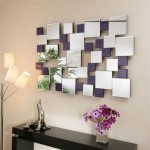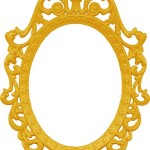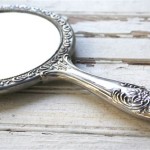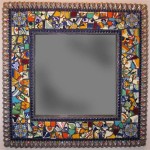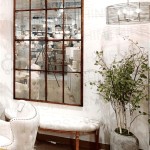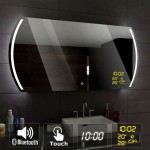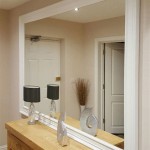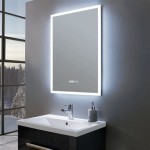Hardware Essentials for Hanging Heavy Mirrors
Mirrors, both functional and decorative, often require special considerations when it comes to hanging, especially if they are substantial in size and weight. Choosing the appropriate hardware is crucial to ensure a secure and reliable installation. This article provides a comprehensive guide to the essential hardware for hanging heavy mirrors, ensuring both safety and aesthetic appeal.
1. Wall Anchors: The Foundation of Support
Wall anchors, also known as drywall anchors, are the bedrock of any heavy mirror hanging system. They provide a solid base within the wall, allowing for a firm grip on the screws or bolts that secure the mirror. Choose anchors designed specifically for the weight of the mirror and the type of wall material. For heavy mirrors, toggle bolts or molly bolts are recommended as they offer exceptional holding power.
2. Screws or Bolts: The Connector
Screws or bolts serve as the physical connectors between the anchors and the mirror itself. Opt for screws or bolts made from sturdy materials such as stainless steel or hardened steel. The length and diameter of the fasteners should be appropriate for the anchor type and the weight of the mirror. Ensure that the screws or bolts are long enough to penetrate the anchor fully and extend into the mirror frame for a secure hold.
3. Washers: Distributors of Force
Washers play a crucial role in distributing the force applied to the screws or bolts, preventing damage to the mirror frame or the wall surface. Use washers that are slightly larger than the diameter of the screw or bolt heads. This creates a broader contact area, reducing the risk of the fasteners cutting into the frame or wall material.
4. Mirror Clips or D-Rings: The Mirror's Anchor Points
Mirror clips or D-rings provide the attachment points on the back of the mirror. These fixtures are typically made from metal and securely fasten to the mirror frame. The spacing between the clips or D-rings should be proportional to the mirror's size and weight to ensure even distribution of the load.
5. Level: Ensuring Alignment
A level is an indispensable tool for ensuring the mirror hangs straight and level. Place the level on the mirror before hanging it to check for any tilt. Make adjustments to the anchor placement or the screws or bolts as needed to achieve perfect alignment.
6. Protective Felt: Prevention of Scratches
Protective felt pads can be applied to the back of the mirror frame or the contact points between the mirror and the wall. These pads help prevent scratches or damage to both the mirror and the wall surface, ensuring longevity and a pristine appearance.
Choosing and utilizing the appropriate hardware for hanging heavy mirrors is crucial for safety and aesthetic appeal. By carefully considering the weight of the mirror, the type of wall material, and the available options, you can ensure a secure installation that showcases your mirror beautifully for years to come.

How To Hang A Heavy Mirror C R F T

How To Hang A Heavy Mirror The Home Depot

How To Hang Heavy Mirrors Frames Without Nails 3m

How To Hang A Heavy Mirror The Home Depot
How To Hang A 100 Pound Mirror On Drywall Quora

How To Hang A Heavy Mirror With Pictures Wikihow

How To Hang A Heavy Mirror The Home Depot

How To Hang A Heavy Mirror The Home Depot

Heavy Duty Picture J Wall Hooks Mirror Hanger Frame Hanging S R

How To Hang A Mirror With Pictures Wikihow
